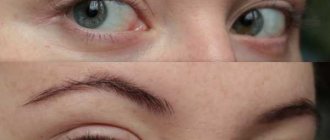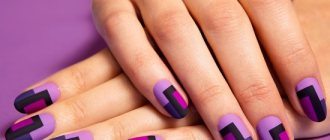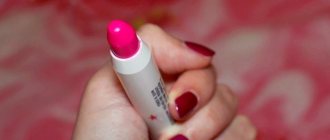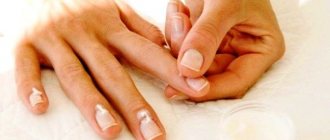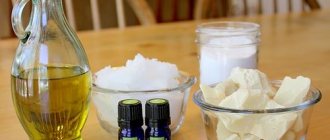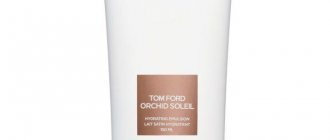What is glycerin and what is it also called?
Today, food glycerin is obtained from any vegetable oils (including palm oil, as the cheapest raw material) and animal fats. Food grade glycerin is produced by hydrolysis (when interacting with water, the original substances decompose, resulting in a new product).
It has several names: glycerol, E422 are the most common ones. The product received the main concept of “glycerin” due to its sweet taste (translated from Greek “glycos” - “sweet”). In terms of its chemical composition, it is the simplest trihydric alcohol. According to physical characteristics, it is a transparent liquid of high viscosity with a sweet taste and no odor. It dissolves well in water and can be mixed with any amount of it.
Differences between food glycerin and technical glycerin
It is a mistake to assume that any glycerin can be used for food production or hygiene. Since the discovery of the supplement formula, more than 1000 experiments have been carried out on it. As a result, pharmaceutical, technical, special and food glycerin appeared at the disposal of industrialists.
As a rule, when talking about a food additive, we mean a substance obtained exclusively from natural oils and fats. This is the key difference between food glycerin and technical or pharmaceutical glycerin. Its purity must be at least 99% (for comparison, the purity of a technical analogue is up to 88%).
Glycerin as a preservative
The properties of agent E422 do not end there. It also exhibits preservative characteristics. This is especially true for perishable products that cannot be stored independently without special conditions. Glycerin allows you to maximize the shelf life of meat and dairy products. In addition, it is often added to bread to slow down its staling and remove traces of starch, making it more pleasant and soft. It also significantly extends the shelf life of dried fruits, which are soaked in its solution before being placed on store shelves.
Application of E422
Therefore, in the food industry it remains a widespread additive and is used:
- in the production of chewing gum (even if the packaging says “sugar-free”);
- in the confectionery industry (it makes sweets sweeter, gives chocolate products a marketable appearance and a softer, more delicate taste);
- in the bakery business: thanks to E422, bread becomes stale more slowly and becomes softer, “fluffy”, and because of it, no sticky, tasteless starch remains in baked goods;
- in the production of soft drinks and aperitifs (for softness of taste and additional sweetness);
- in the production of pasta (boiled, non-glutinous noodles, vermicelli, pasta - thanks to glycerin).
Application area
Glycerin first became widespread in the food industry. Confectionery products and a huge number of different creams for cakes still cannot do without this element. Its popularity in the food industry has been aided by the inability to add sugar to certain foods and drinks.
The substance is used in soap making, because due to its physical properties, glycerin is simply irreplaceable - in addition to its plasticity, it also has an antiseptic effect, which makes it possible to make antibacterial soap.
The effect of glycerin on the skin is extremely positive - the effect of its use is both softening and drying, which is why it is often used in the manufacture of hand, face and body creams.
Physical properties [edit | edit code ]
Colorless, viscous, odorless liquid. It tastes sweet, which is why it got its name (Greek γλυκερός - sweet). It has a molar mass of 92.09 g/mol, relative density d 4 20 <4>^<20>> = 1.260, refractive index n D 20 ^<20>> = 1.4740. The melting point is 17.9 °C, boils at 290 °C, partially decomposing. It is hygroscopic, absorbs water from the atmosphere in amounts up to 40% of its own weight. It is miscible with water, methanol, ethanol, and acetone in any proportions, but is insoluble in ether and chloroform, although it can dissolve in their mixtures with ethanol [2].
When glycerin is dissolved in water, heat is released and contraction occurs—a decrease in the volume of the solution. Mixtures of glycerin with water have a melting point significantly lower than each of the substances separately, for example, with a mass content of glycerin of 66.7%, its mixture with water will freeze at −46.5 °C [2].
Forms azeotropes with naphthalene, its derivatives and a number of other substances [2].
How to use glycerin for facial care?
As a cosmetic component, this substance is used in home remedies for dry skin and works well when paired with honey.
For an effective cleansing mask, mix a teaspoon of glycerin and honey, and then add the same amount of oatmeal. The mask should be applied to problem areas of the face for about 15 minutes and then rinsed off with lukewarm water.
The moisturizing effect - the main benefit of vegetable glycerin - can be achieved by dissolving a teaspoon of glycerin in the same amount of water and mixing with one egg yolk. Let the mask work for approximately 15 minutes, and then rinse it off with water at room temperature.
We recommend that you spend time holding any cosmetic product containing glycerin on your skin next to a filled bath.
In order for this substance to work well, it is necessary that the air humidity be at least 45%. Otherwise, this component will do you a disservice and will begin to “extract” water molecules directly from your skin, drying it out.
Chemical properties [edit | edit code ]
The chemical properties of glycerin are typical of polyhydric alcohols.
The interaction of glycerol with hydrogen halides or phosphorus halides leads to the formation of mono- and dihalohydrins.
Glycerol is esterified with carboxylic and mineral oxygen-containing acids to form the corresponding esters. Thus, with nitric acid, glycerin forms trinitrate - nitroglycerin (obtained in 1847 by Ascanio Sobrero), which is currently used in the production of smokeless gunpowder.
HOCH2CH(OH)-CH2OH → H2C=CH-CHO + 2 H2O
,
and oxidizes to glyceraldehyde CH2OHCHOHCHO
, dihydroxyacetone
CH2OHCOCH2OH
or glyceric acid
CH2OHCHOHCOOH
.
Esters of glycerol and higher carboxylic acids - fats are important metabolites; phospholipids - mixed glycerides of phosphoric and carboxylic acids - also play an important biological role.
Use in food
In the food industry, glycerin is often used: in the production of candies, marshmallows, chocolate, pasta - for stickiness, bakery products - for fluffiness and softness; chewing gum, soft drinks.
To increase shelf life, dried fruits are treated with liquid glycerin, and tea and coffee are treated with liquid glycerin to impart a special taste.
But it is more difficult to buy food grade glycerin for home use, although it costs only 40-50 rubles; It is usually offered by small and large wholesale online stores.
You can also take medical glycerin for internal use (glycerol), with a high degree of purification - 99.8%. Some housewives prepare mastic with liquid glycerin for decorating cakes - it’s not difficult. Dissolve, stirring, in 2 tbsp. heated water (about 70°C) gelatin (½ tsp), add glucose (½ tbsp) and glycerin (2 tsp), stir until smooth. Gradually add powdered sugar (450 g) and knead (you can use your hands) until you get a smooth and non-sticky dough. This mastic, wrapped in film, is stored for about 2 weeks; You can add food coloring during the cooking process.
Application [ edit | edit code ]
The scope of application of glycerin is varied: food industry, tobacco production, electronic cigarettes, medical industry, production of detergents and cosmetics, agriculture, textile, paper and leather industries, plastics production, paint and varnish industry, electrical engineering and radio engineering (as a flux for soldering) .
Glycerin belongs to the group of stabilizers that have the properties of maintaining and increasing the degree of viscosity and consistency of food products. Registered as a food additive E422, and is used as an emulsifier with which various immiscible mixtures are mixed.
Since glycerin gels well and burns without odor or fumes, it is used to make high-quality transparent candles and the base for liquid used in smoke machines.
Glycerin is also used in the manufacture of dynamite [5].
In recent years, glycerin has been used, along with propylene glycol, as the main component for the preparation of liquid and cartridges for electronic cigarettes.
It is used in cryobiology and cryonics as the main component of popular penetrating cryoprotectors for the cryopreservation of anatomical preparations, biological tissues and organisms.
Today it is difficult to imagine our life without food additives. They were discovered at the beginning of the last century in Japan during research experiments. Then scientists discovered that food to which seaweed is added has a distinctly bright taste. Later it turned out that the taste, aroma, color and even consistency of the product can change under the influence of additional components. This discovery was put into practical use and changed the culinary industry. Manufacturers realized that additives would make the product more attractive to consumers.
New fashion - electronic cigarettes
Initially, this innovation was mainly intended for those who quit smoking regular cigarettes, but gradually “vaping became a new fashionable trend. The composition of liquid for electronic cigarettes includes the following components:
- Nicotine, the main component of regular cigarettes, is also found in vaping liquid. The only difference is that electronic cigarettes use purified nicotine, without additional impurities;
- Propylene glycol;
- Actually glycerin. It is thanks to this substance that e-cigarette liquid is so viscous;
- Various aromatic additives and water.
By the way, liquid for electronic cigarettes, in which natural glycerin predominates (up to 80%) is called soft. First of all, this composition is intended for those who are allergic to propylene glycol.
The electronic cigarette is designed in such a way that when you press the heating button, the liquid evaporates, and due to the evaporation of glycerin, a cloud of thick vapor comes out.
But is it really safe to “hover”? And is it really true that a person inhaling all these impurities will not harm himself?
Controversy surrounding dietary supplements
There are many conflicting claims surrounding these substances. For example, someone believes that all additives are artificial and therefore dangerous. There is an opinion that they should be completely excluded from the composition of products. However, these allegations are unfounded.
Firstly, food additives can be either artificially synthesized or of natural origin. This division does not mean that unnatural substances are dangerous to health. For several decades, an expert commission has been working in Russia and Western countries to regulate the legality of using certain additives. Its main task is to collect up-to-date information about all the properties of components and adjust the list of substances permitted in the food industry. There is also an internationally recognized designation system for all additives, in which they are assigned individual indexes.
Benefits and harms
Food additive E 422 is recognized as one of the safest. Glycerin is part of all fats. A small amount of the substance is found in human blood.
Entering the body, it is easily absorbed and converted into fats.
There are no side effects from use. The additive is approved for use in all countries. The permissible daily dose has not been established.
People with a history of kidney disease and blood circulation disorders should be careful: glycerin removes fluid from the body.
Can the E411 food additive cause harm to the human body? The most detailed answer to this question is in this article.
What beneficial properties do anthocyanins have? Find out about it here.
Glycerin - food additive
Glycerin is designated by the index E422. It is approved for use and belongs to the group of trihydric alcohols. Has the following characteristics:
- liquid structure;
- colorlessness;
- sweetish taste;
- solubility in water;
- resistance to cold.
Glycerin was obtained back in the 18th century as a by-product in the production of soap. Now it is extracted industrially through the hydrolysis of vegetable and animal fats.
It is interesting that in addition to food glycerin, there are other technical types (their purity does not reach one hundred percent). They are used in the production of medicines, cosmetics and household chemicals. Food grade is actively used for the production of food products.
Glycerin as a stabilizer
Normal stable texture of raw materials is the key to obtaining a quality product. Glycerin can improve it by making it resistant to accidental external influences. It successfully increases the degree of viscosity of the future product. It exhibits its beneficial qualities during production:
- pastry dough;
- alcohol-containing drinks (especially liqueurs to give special refined notes);
- low-calorie foods;
- chewing gum (including those without added sugar);
- pasta (noodles and vermicelli turn out non-sticky and soggy thanks to it).
Use of glycerin in the food industry
The scope of use of this additive is wide in the confectionery industry. Due to its unique viscosity, glycerin is well suited as a thickener that improves the consistency of the product to the desired level. In particular, it is placed in:
- cookies, cakes, sweets, pastries - this is how their taste becomes soft and delicate;
- confitures, preserves and jams.
In addition, glycerin performs the same function in dietary and high-fat dairy products.
Another use of the additive in the confectionery industry is as a sweetener. Glycerin has important features:
- its sweetness level is about 60 percent of sugar, so it can act as both a complete sweetener and as an additional ingredient;
- The glycemic index of the substance is relatively low, which makes it an ideal sweetener for preparing low-carb dishes.
Glycerin - stabilizer
The use of glycerin in the food industry is not limited to these properties. It also has a stabilizing characteristic. The stable structure of the future product is the key to a successful final result. In this case, glycerin makes it as resistant as possible to accidental external influences. It is useful for making:
- test;
- alcoholic drinks (most often liqueurs, which have a refined texture);
- low-calorie dietary products;
- chewing gum and chewing candies;
- pasta (prevents them from sticking).
Glycerin is a preservative
Increasing the shelf life of a product in proper form is one of the most important rules for its successful sale. This is especially true for goods that can easily and quickly deteriorate. Glycerin can extend the shelf life of products:
- meat industry (sausages, frankfurters, sausages);
- dairy industry (yogurt, fermented baked milk, kefir, soufflé, whey);
- bakery products (slows down the process of bread hardening, removes possible traces of starch, making the taste more pleasant);
- dried fruits (they are moistened in a solution before being placed on store shelves to form a protective film and maintain freshness).
Other applications in the food industry
Glycerin is also used as a moisture-retaining component when mixed with agar syrup, so it prevents marmalade, marshmallows and soufflé from drying out and excessively hardening. It acts as a solvent in wax-fat consistency (for example, dragees) and an emulsifier, ensuring the homogeneity of coffee and tea.
Reviews of glycerin as an ingredient for refilling e-cigarettes
Food grade glycerin for electronic cigarettes is actively used by tobacco companies as a component of vape refills. The manufacturer clearly comments on the production of its products, showing examples and helping the buyer determine whether the product is of high quality or not. On the part of users, one can notice a tendency to aggressively perceive the presentation of such information. The majority of buyers leave negative reviews about e-cigarettes, but despite this, the popularity of vape products does not fall.
A potential buyer trusts the reviews of specialists more than the dubious contingent of reviewers. Medical representatives sharply express their opinion on whether glycerin in electronic cigarettes is safe and whether it is worth choosing this method of smoking in general.
Doctors advise not to smoke at all, especially e-cigarettes. The principle of smoking differs from traditional smoking, but the harm from e-cigarettes is obvious. Although the components of vape refills individually are not so toxic as to cause serious poisoning, when used together, the filling of an e-cigarette can have a very negative effect on human systems and organs.
Everyone makes a choice consciously, sometimes this choice is not entirely successful and is harmful to health. Nevertheless, the electronic cigarette is becoming increasingly interesting among smokers. An attractive picture, non-addictiveness and the promise of lightness and richness of taste are an advertising tool that, like a magnet, attracts buyers who want to try a new product.
Supplement Safety
Glycerin is used in most countries and is recognized as completely non-toxic to humans. It does not have the carcinogenic effect attributed to it and, moreover, is a natural substance for the body that is produced in the gastrointestinal tract. It is also a proven fact that in small quantities glycerin has a positive effect on the mucous membranes, vascular walls and skin. Pediatricians often prescribe liquid glycerin to children to eliminate neurological problems, as well as as part of cough medications (made to order in pharmacies). Food glycerin is even added to baby food and cosmetics (such moisturizing and nourishing products protect it well from wind and cold).
Doctors only recommend caution in its use for people with heart and kidney diseases. The main rule, therefore, is to listen to the individual characteristics of the body.
Instructions for use
Glycerin for medical purposes is a thick, colorless, odorless liquid. Mixes well with water, dissolves in alcohol, and also dissolves alkalis and salts. It is these beneficial properties of glycerin that have found wide application in medicine:
- for the production of pharmaceuticals;
- dissolving drugs;
- protecting creams and ointments from drying out;
- increasing the viscosity of drugs.
The benefit of glycerin in medicines lies in its antiseptic properties.
This is a colorless liquid that can be used internally without harm. It is absorbed into the stomach, but not into the blood. The benefits of taking glycerin orally affect coughs, glaucoma, and stroke. Doctor's advice upon admission is required. Contraindications for internal use are:
- diabetes;
- liver diseases;
- malfunction of the kidneys.
In such diseases, the use of the drug can cause dehydration and cause irreparable harm to the body.
Only with moderate, correct use does glycerin benefit the body, and in order to avoid harm you need to know some features:
- in its pure form dries the skin;
- There is great harm from the combination of glycerol with silicone, skin inflammation may occur;
- when using the drug on the skin, melanin is washed out of it and it becomes lighter;
- The product is not suitable for oily skin.
Experts are still arguing about the benefits and harms of glycerin for facial skin. But everyone agrees that it is necessary to use proven drugs, taking into account the recommendations prescribed in the instructions.
This trihydric alcohol has a wide range of applications:
- It is used in the confectionery industry and in the production of sweet drinks, which contain the so-called stabilizer E-422.
- It is a component of detergents capable of saponification.
- The pharmaceutical and medical industries also use glycerin.
- For industrial purposes for paper production.
- In the cosmetic field, it is used as a hygroscopic substance that can retain water for some time and, thereby, nourish human skin.
There is currently no clear answer as to whether glycerin vapors are harmful. On the one hand, the substance does not harm the body at all when inhaled, on the other hand, dryness of the mucous membranes (and associated unpleasant sensations) when “vaping” is inevitable. Glycerin “loves” water, so even in the form of vapor it tries to take it away from the inhaler. Therefore, many e-cigarette smokers often experience a sore throat and constant dry mouth.
Overheated liquid in an e-cigarette can be dangerous. In this case, acrolein begins to be released - a carcinogen that can harm a person, and in fact this is the greatest harm from glycerin. However, if you use an e-cigarette correctly, there will be no negative side effects from glycerin.
But other substances can greatly damage the body’s systems:
- nicotine, although purified, is still far from useful, and it is in the composition of e-cigarette liquid that it causes the greatest harm;
- propylene glycol often causes allergies;
- Various aromatic additives can intensify allergic reactions.
Glycerin is universal, which is why it is so widely used in all sectors of human activity. It has antiseptic properties, due to which it is actively used by pharmacological factories for the preparation of medicines. Its low price makes glycerin indispensable in cosmetology, medicine and the food industry.
- In cosmetology, glycerin is used to prepare various recipes for creams, masks and ointments as a moisturizing component. Its protective effect allows you to save the skin from the effects of pathogenic microbes that can penetrate through microcracks and allows you to keep it fresh and healthy. But not all cosmetologists recommend it for frequent use. Due to its hygroscopicity, glycerin, on the contrary, absorbs moisture rather than giving it away, which is a stumbling block between representatives of different schools. But here we should not forget that if the surrounding air is dry, then it will have nothing to absorb.
- The use of glycerin in medicine is associated with its ability to perfectly dissolve water and alcohol, thanks to which it is possible to increase the viscosity of any medicine or, on the contrary, to dilute it, that is, it protects medical ointments and pastes from drying out quickly and extends their shelf life. Various suppositories (suppositories) for rectal use are also prepared on the basis of glycerin. Sore throat - and here not a single medicine can do without it. Due to its high viscosity, it perfectly coats the mucous membranes of the mouth, which helps soothe a sore and sore throat. The antiseptic and disinfecting properties of glycerin are suitable for treating wounds and cuts.
- Food grade glycerin (E422) is produced only from natural oils and fats.
- In bakeries, they process baked goods to prevent the appearance of a stale crust.
- In the production of chewing gum, E422 is added to increase its viscosity; here, glycerin also acts as a sugar substitute.
- Pasta and vermicelli are treated with food grade glycerin to reduce sticking during cooking.
- Chocolate - confectioners use it when they want to make the bars more delicate in taste.
- And even in the tobacco industry they found use for it. Each cigarette is treated with food-grade glycerin to eliminate too strong an aroma.
Those products that contain E422 are stored much longer and look fresher.
Facial benefits:
- Retains moisture in the skin.
- Helps nutrients penetrate into cells.
- Accelerates wound healing.
- Moisturizes.
- Clears pores of dirt.
- Antiseptic.
- Softens.
Moisturizing the dermis occurs due to the hygroscopicity of the substance: it promotes the absorption of moisture from the environment. If a person is inside a dry room, then glycerol draws moisture from the cells of the dermis, releasing it to the environment.
Harm of glycerol:
- The drug is used only at high air humidity, at least 60%, otherwise, instead of moisturizing, the opposite effect is obtained.
- Flushes out melanin.
- May contribute to the appearance of comedones in the presence of inflamed skin.
- In combination with silicone it causes allergic skin reactions.
- Removes tan quickly.
The more humid the air, the faster the process of saturating cells with moisture occurs.
Since the article deals with external use, we will omit the effect on the functioning of internal organs, body systems and the associated nuances of use.
The drug is prescribed for:
- Softening the skin.
- Treatments of mucous membranes.
- Elimination of dry skin, hair, dehydration of the dermis.
- Treatment of acne, bedsores, diaper rash (treated with undiluted substance) or cracked heels.
- For thrush, tonsillitis or pharyngitis (douching and rinsing with a diluted drug).
It acts as a dermatoprotector, filling in and smoothing out fine wrinkles, which plays an important role in the manufacture of anti-aging masks. In addition to glycerol, they may include vitamins E, B1, ascorbic acid (stimulates collagen formation).
Glycerin in cosmetics is used to care for:
- Skin of the face, hands, feet.
- With fingernails.
- Hair.
https://www.youtube.com/watch?v=
Contraindications for the use of glycerol:
- Lactation.
- Pregnancy.
- Individual intolerance (manifests in the form of allergic reactions).
- Open wounds, other violations of the integrity of the skin (may strongly sting or burn).
For internal use, there are an additional number of contraindications, so you should carefully read the official instructions.
It is not recommended to use undiluted glycerin: it can cause itching, peeling, and dehydration of the skin. Combine with water (including mineral water), oils, vitamins, herbal infusions, and other useful diluents. In the composition of cosmetics it should not exceed 5% (subject to home preparation) or it should appear further than the fifth position on the packaging of a purchased product.
Try to add alternative sources of moisture to your homemade cosmetics: aloe, yolks, pulp or juices of fruits, berries, and vegetables. Don't forget to maintain air humidity: spray water with a spray bottle in the room where you are.
Using glycerin at home is quite simple - all the necessary ingredients are literally at hand or can be purchased at affordable prices at the pharmacy closest to your home.
Here's what women who already use glycerin say:
- Anna, 34 years old, Novosibirsk: “I use glycerin throughout the year. It turns out that there are several courses that include daily use of masks. Let me note right away that don’t expect instant results! This is not Botox, but a natural remedy. Therefore, regularity of procedures is important. For my dry skin, the best choice was to use gelatin in combination with glycerin. Perfectly softens and cleanses!”
- Karina, 40 years old, Moscow: “I add honey to the classic recipe with gelatin. I take only 3 teaspoons of it. I heat the mixture in a water bath so that all grains of gelatin dissolve completely. You need to stir all the time! I don’t leave the mask on for longer than 20 minutes. After use, the skin is smooth and soft, like a child’s.”
- Lyudmila, 30 years old, Kaliningrad: “For obvious reasons, I don’t have wrinkles yet. The main concern is to refresh and moisturize the face. I use vitamin E and glycerin. But I noticed that there is a slight lifting effect - facial folds in the lip area have become less noticeable.”
Only hypoallergenic mascara is suitable for sensitive eyelid skin. To be on the safe side, it is also better to opt for a hypoallergenic face cream.
Result
